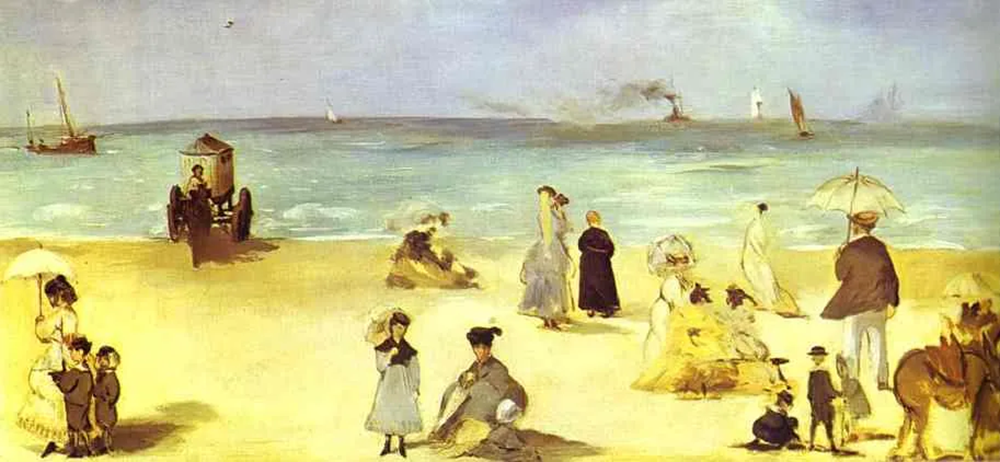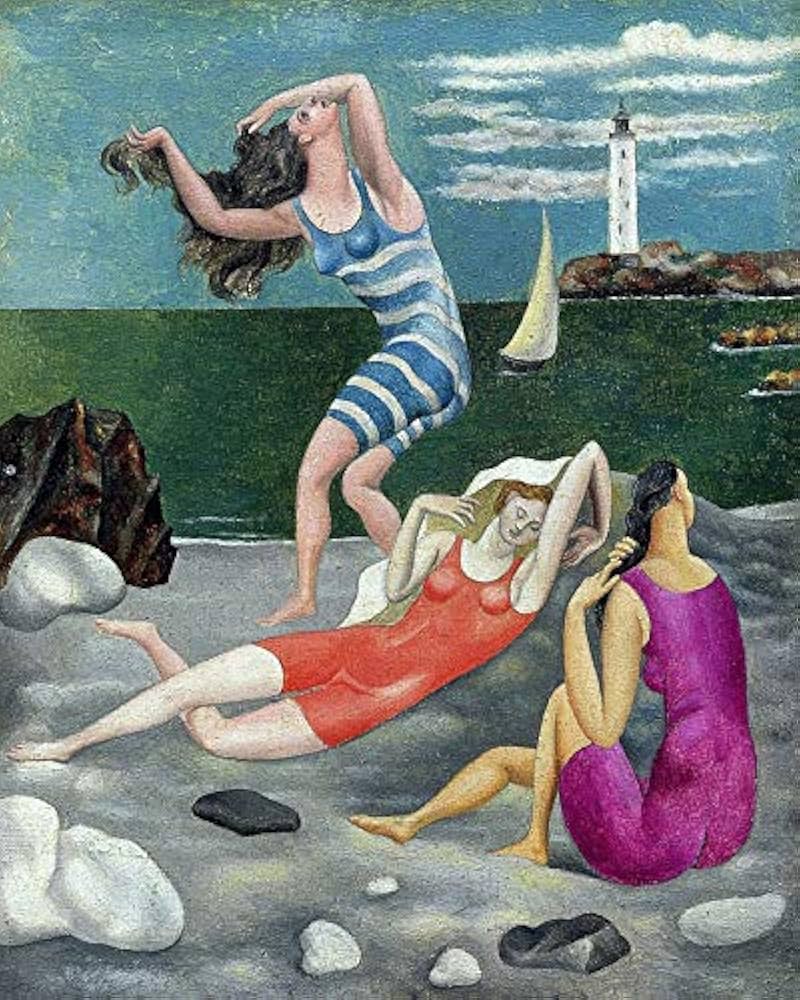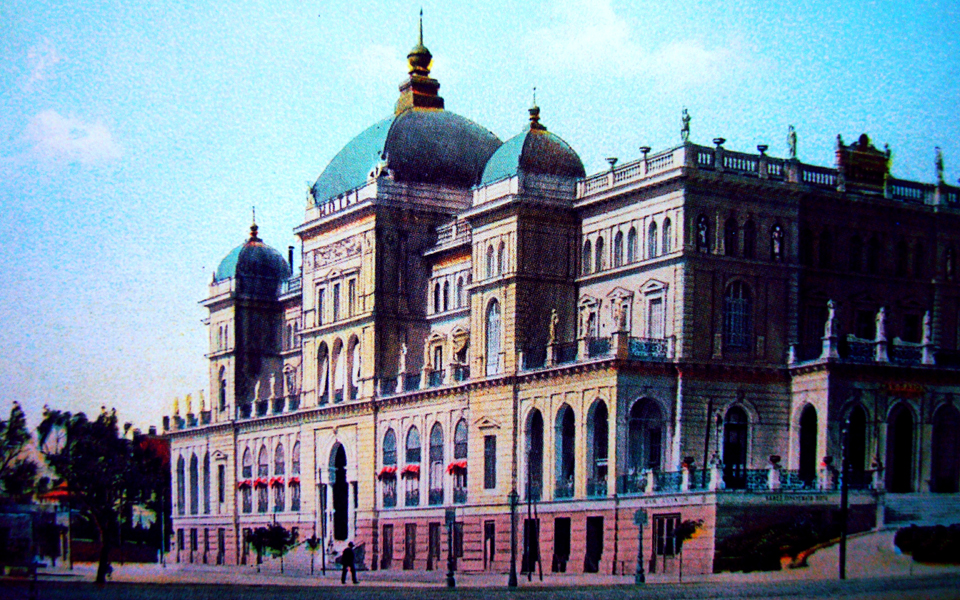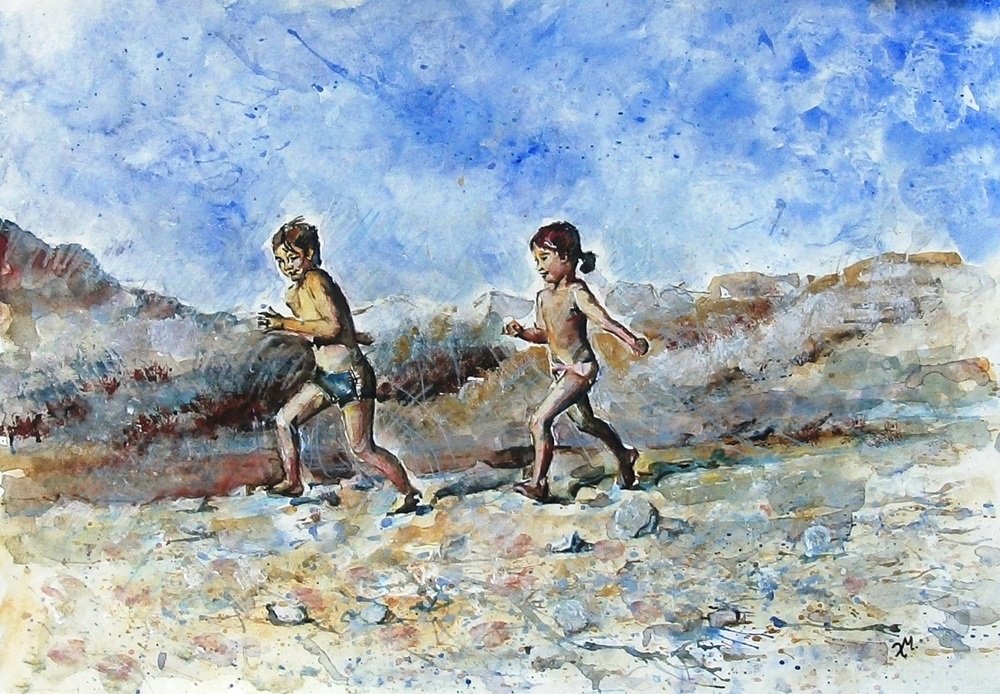
From the very first years of human existence, contact with the sea was inevitable due to the need for food and transport. However, the perils of the sea and the unknown gave rise to myths and legends of terrifying creatures lurking in the sea water. People would only swim for the purposes of military training, exercising and securing food.
In other respects the coast would remain the boundary between the safety of land and the danger of the sea. Swimming for pleasure and recreation would take many, many years to emerge. The first to “venture” into seaside fun and swimming seem to have been the upper class Romans. However, this practice was not maintained.
In the Middle Ages the Church identified nudity with sin, making any contact with water, and even more so with the sea, forbidden. Even references to instances of bathing for military purposes are sporadic.
In Byzantium, where the Greco-Roman tradition was stronger, on the one hand, thermal baths and baths continued to operate, on the other hand, contact with the sea seems to have been more widespread as a professional occupation in cases such as pearl fishing, as a religious practice of water sanctification and as a form of entertainment.

Picasso Bathers, 1918
The Renaissance era brought for Europe the exoneration of swimming and physical exercise in general.
In the years of the great discoveries, although sea expeditions were frequent, long and dangerous, the majority of the crews did not know how to swim. So much so that they were impressed by the swimming skills of the natives. Of course, this skill, in keeping with the racist spirit of the Europeans of the time, was seen as a sign of racial inferiority.
However, scholars of the time, advocates of physical education, increasingly emphasized the benefits of swimming. To these should be added the medical views on the benefits of sea water and swimming. Gradually it seems that his suggestions found a response in the upper classes. Thus, in the 17th century, swimming became part of the leisure activities of the French King Louis XI and his court. It was also adopted by the English King Charles II and the English nobility. Of course, it was limited to flotation and clumsy wading, but it had opened the way to widespread recreational swimming. It would take several more years to establish it.
From the middle of the 18th century, seaside resorts began to be established, initially aimed at those seeking some kind of treatment in the sea water. In 1824, the first organised beach in continental Europe was founded in Dieppe, France, thanks to Marie-Caroline of Bourbon-Two Sicilies, Duchess of Berry, who was influenced by the English aristocrats. Gradually Dieppe became an attraction for the French aristocracy who rushed in for sea bathing, and it wasn’t long before a tourist industry developed with a hotel and casino to cater for the wealthy visitors. It was only a matter of time before the new habit spread and more and more beaches with changing rooms, tourist facilities, activities, etc. appeared, of course separately for men and women.

Ilias Charisis| The Swimmer
The development of the railway in the mid-19th century facilitated travel throughout Europe and sea resorts began to develop from the Mediterranean to Scandinavia, the most popular being the French Riviera, which was visited en masse by members of the English aristocracy.
In Greece this new European trend was late to appear and was treated with caution by the Greek mores of the time. The beginning was made in the 1840s with the first popular coast at Pasalimani. Slowly, Athenians began to visit other nearby beaches in Attica. The Athenian upper class began to build mansions in Faliro, while in the late 19th and early 20th century the construction of two large hotels, the Grand Hotel and the Aktaion, commenced. An evidence that the coastal part of Attica was becoming popular.

Hotel Aktaion
Evidence of the change in morals in our country was the introduction of the “bane-mixed” in 1927, with a delay of a few decades compared to their first appearance in Europe. Of course, the “mixed” beaches had already spread to the most remote beaches of Attica “Mixed baths and free baths … are made all over the world, where there are sea, rocks and sand and they are not becoming less in Greece at last. What is done in Skaramanga, Agios Andreas, Glyfada, Voula, Vouliagmeni, the Piraeus peninsula, there is no reason why it should not be done on the shores of Palaio Faliro”. (Vradini, 7 June 1927).
Only four years before, in 1923, another revolutionary innovation had taken place, and it was none other than tanning. The pioneer was the famous Coco Chanel in Cannes. Since then, tanning has become a worldwide phenomenon. Until 1923 it was considered a characteristic of the rural population working in the countryside, and the upper classes had to avoid it. After Chanel’s example, however, this logic changed. Now, tanning was typical of the upper middle class who could afford and had the leisure time to take holidays in sunny resorts.

Christina Makropoulou| Windrunners
The habit of sea bathing was introduced “from high society”, i.e. from the aristocratic classes, but was loved by everyone. Today, a huge industry has grown up around the sea, including clothing, cosmetics, accessories, infrastructure and facilities, catering, sports and much more.
Sources:
https://www.abc.net.au/news/2023-02-17/a-world-history-of-swimming/101971846
https://freader.ekt.gr/eadd/index.php?doc=48541&lang=el#p=78
https://en.wikipedia.org/wiki/Sea_bathing
https://digitallib.parliament.gr/display_doc.asp?item=39700&seg=
https://www.newsville.be/christos-mplatsiotis-istoria-diakopon-thalassa/







Leave A Comment